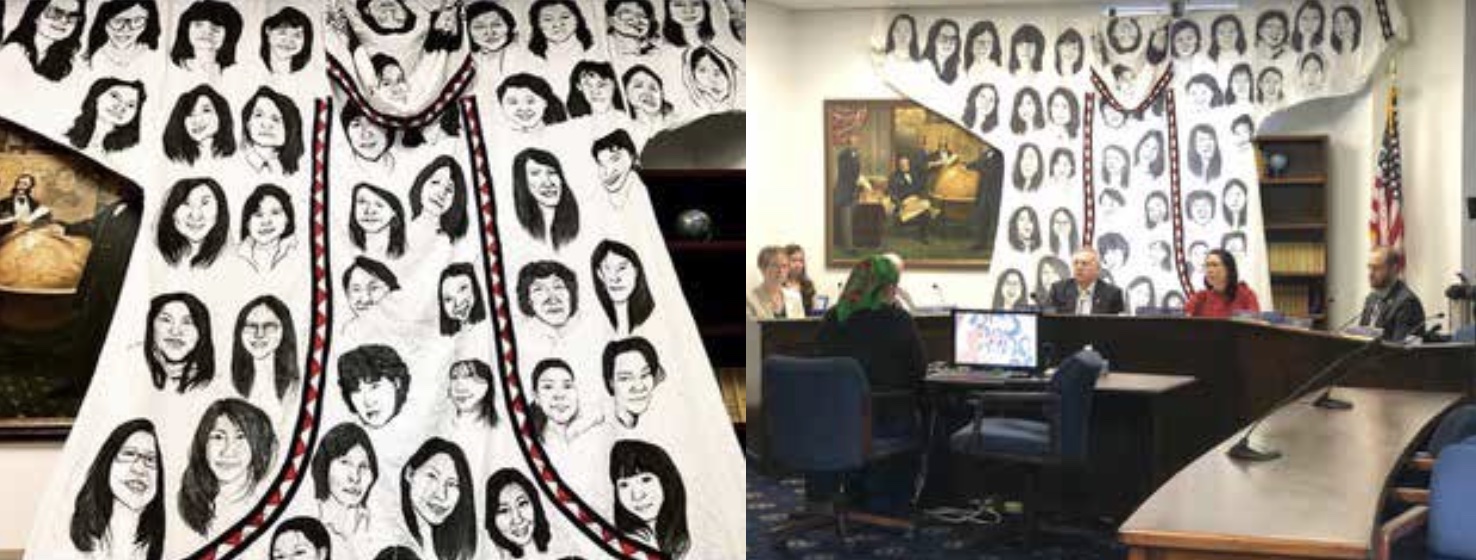The Memorial Qaspeq for Alaska Native Women

“The main inspiration for the qaspeq was the disappearance of Val Sifsof in July of 2012 from Granite Creek camp ground. She was a family friend. It was also the awareness of the pattern of deaths and disappearances that I didn’t hear people talking about but that I’d been aware of since I was about 8 years old. They are all our relatives. The goal of the project is to humanize the issue and find a way to make people feel it. I wanted to make the qaspeq large to represent the space that the grief occupies within Native communities. It was done to honor the memory of our relatives and remind the world that it shouldn’t be up to Native women to prove their innocence before crimes against them are investigated. It was also about healing myself and sparking healing for all Native women. I carry these stories, but they are not mine. The project has its own energy and my job is just to facilitate its movement. I can’t undo these crimes, but if we can open conversations about the root causes of violence that are honest and do not minimize the effects of violence, then the project is worth doing. The project has been ongoing for the last 18 months. With the larger qaspeq, I’m hoping that my efforts will also honor the advocacy work happening all over North America. This work has been driven by the efforts of Native women and it’s important to acknowledge that. Visibility is a step toward changing social attitudes. It has been featured on Alaska channels 2 and 11, the Juneau Empire, First Alaskans magazine, First Americans magazine, and was present during testimony in Juneau for HR 10 in support of Savanna’s Act and continued funding for VAWA. The resolution passed unanimously.”—Amber Webb, Creator of the Memorial Qaspeq





